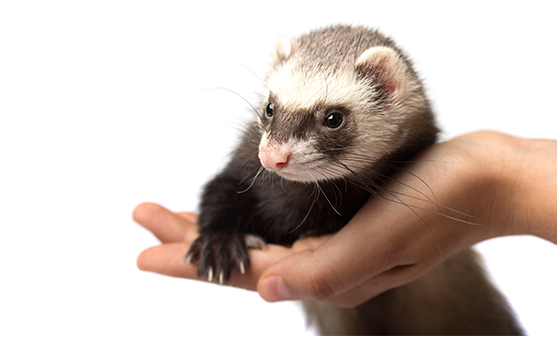기타동물
SPF New Zealand White Rabbit
Pdb:NZWnl
New Zealand rabbit has white body, thick and wide ear root, short and erect ear, red eyes, round buttocks, full waist and ribs. Weaning at 40 days old, good reproductive performance, more than 5 births per year, with an average of 6-8 offspring per birth.
Research Area
Used in pyrogen experiment
Immunology experiment
Ophthalmic toxicology
Cardiovascular pharmacodynamics experiment
Production of polyclonal antibodies
Research and screening of reproductive physiology, embryology and contraceptives
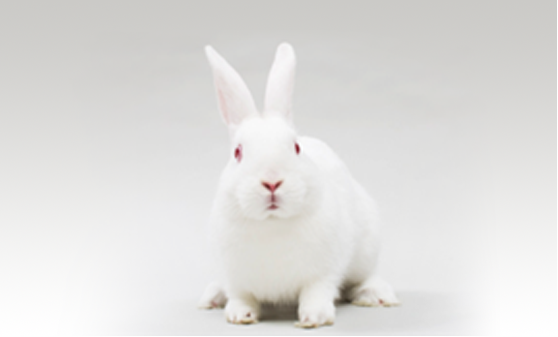
| Age(weeks) | 6W | 7W | 8W | 9W | 10W | 11W | 12W | 13W | 14W | 15W | 16W | 17W | 18W | 19W | 20W | 21W | 22W | 23W | |
| Weight(kg) | M | 0.9~1.2 | 1.2~1.6 | 1.4~1.9 | 1.8~2.2 | 2.0~2.2 | 2.1~2.3 | 2.2~2.5 | 2.3~2.6 | 2.4~2.9 | 2.5~3.0 | 2.6~3.1 | 2.8~3.3 | 3.0~3.4 | 3.1~3.5 | 3.2~3.7 | 3.3~3.8 | 3.4~3.9 | 3.5~4.0 |
| F | 0.9~1.2 | 1.1~1.5 | 1.4~1.9 | 1.8~2.2 | 2.0~2.2 | 2.1~2.3 | 2.1~2.5 | 2.2~2.6 | 2.4~2.9 | 2.5~3.0 | 2.7~3.2 | 2.9~3.4 | 3.1~3.5 | 3.2~3.7 | 3.3~3.9 | 3.3~3.8 | 3.5~4.0 | 3.6~4.1 | |
- Chinchilla Rabbit
Coat color : Cyanblue
The blue violet rabbit is named for its coat color similar to that of a rare South American fur animal, the blue violet hairy mouse. The blue violet rabbit is a hybrid of the Galen rabbit and the Himalayan rabbit, and a hybrid of the Galen rabbit and the blue beverent rabbit, and then the two hybrid progenies are hybridized, so that the offspring are fixed through self cross, that is, the blue violet rabbit is bred.
Research Area
Used in pyrogen experiment
Immunology experiment
Ophthalmic toxicology
Cardiovascular pharmacodynamics experiment
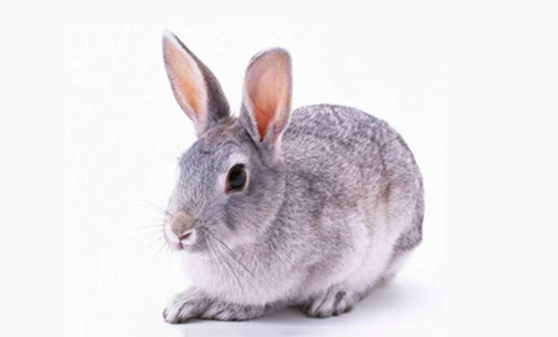
- Duch Rabbit
Coat color : Black & White
The Dutch rabbit is believed to have been developed by Adrian de cock of the Netherlands. In 1949, he was born from the offspring of a miniature rabbit (pygmy rabbit) and a British rabbit
Research Area
Used in pyrogen experiment
Immunology experiment
Ophthalmic toxicology
Cardiovascular pharmacodynamics experiment
Production of polyclonal antibodies
Research and screening of reproductive physiology, embryology and contraceptives
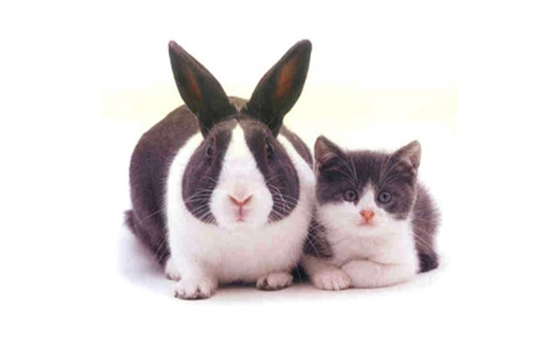
- SPF GuineaPig
Dunkin Hartley
Coat color : White (Albino)
In 2016, it was introduced from the national rodent experimental animal seed center with the introduction number of 20161221001.
Growth value of each age group
Research Area
Guinea pigs are sensitive to many pathogens and viruses
Guinea pigs are widely used in the study of infectious diseases
The best animal for isolation, identification and pathological study of guinea pig tuberculosis
Guinea pig can't synthesize vitamin C in vivo, so it is an ideal animal to study scurvy at present
The serum of aged female mice is rich in complement
Mostly used in the preparation of complement in immunology
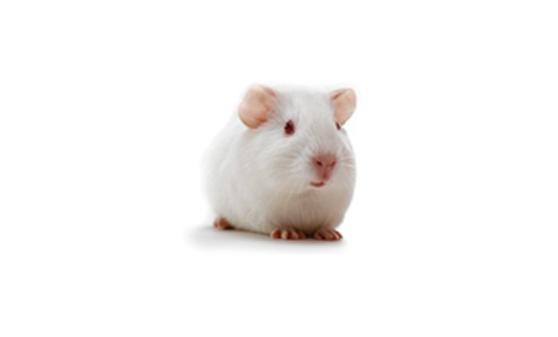
| Age(weeks) | 3W | 4W | 5W | 6W | 7W | 8W | 9W | 10W | |
| Weight(kg) | M | 241.7 | 295.5 | 359.4 | 426.3 | 505 | 566.3 | 617.9 | 674.6 |
| F | 183.4 | 245.7 | 294.3 | 341.3 | 386.5 | 425.4 | 465.9 | 492.9 | |
- Hamster
HFK:Hamster
Golden Syrian Hamster
Coat color : Golden brown and white
Research Area
Behavior / Carcinogenicity / COVID-19 / Infectious disease / Metabolism
Oncology / Surgical / Toxicology / Hibernation / Hypercholesterolemia
Syrian Hamster Embryo (SHE) Cell Transformation Assay

| Age(weeks) | 3W | 4W | 5W | 6W | 7W | 8W | 9W | 10W | |
| Weight(kg) | M | 43 | 67.8 | 88.1 | 100.9 | 107.5 | 114.1 | 119.6 | 123.5 |
| F | 42.8 | 66.7 | 86.4 | 98.9 | 104.6 | 108.9 | 113.9 | 118.8 | |
- Beagle
Than Beagles dog originating in the United Kingdom, is a hound smaller. Introduced in the U.S. in 1880. The ability to adapt to the environment, a strong resistance to disease, early sexual maturity. Coordination and Human genetic traits and physiological and biochemical indicators of stable, reproducible experimental results, etc.,
Research Area
widely scientific research/basic medical study/chronic experimental research/pharmacology/toxicology/drug metabolism studies/nutrition and physiology research/oncology
second-class and above new drugs preclinical research

| Age(Months) | 3M | 4M | 7M | 10M | 12M | |
| Weight(kg) | M | 4.2~4.7 | 4.9~6.6 | 7.8~8.5 | 8~9.8 | 10~11 |
| F | 3.9~4.3 | 4.5~5.7 | 7~8 | 7.5~9 | 7.5~9.8 | |




